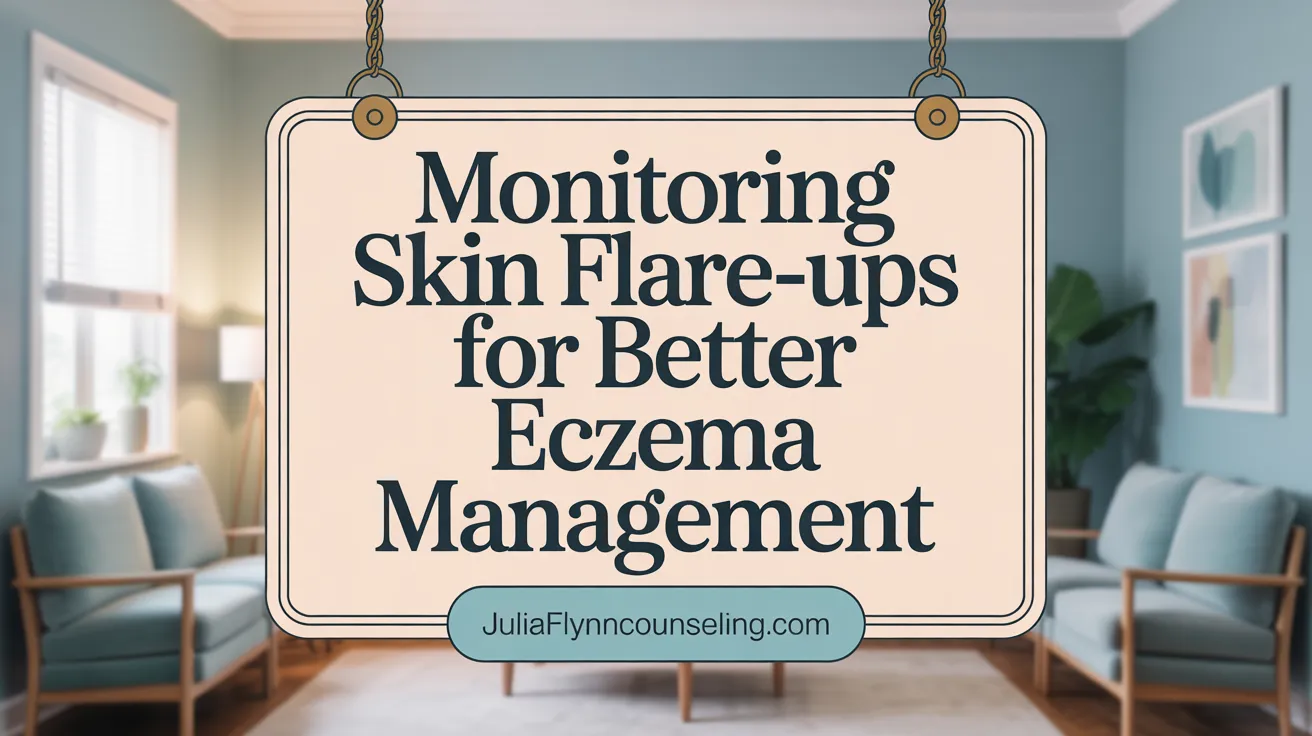Setting the Scene for Pediatric Eczema Flare Dynamics
Atopic dermatitis (AD), commonly known as eczema, is a widespread chronic inflammatory skin disease that primarily affects children worldwide. Characterized by relapsing episodes known as flare-ups, eczema profoundly impacts the quality of life of patients and their families. This article delves into the prevalence, patterns, triggers, natural history, and management of eczema flare-ups in children, synthesizing the latest scientific findings and clinical insights to support healthcare professionals and caregivers in understanding and addressing this challenging condition.
Prevalence and Frequency of Eczema Flare-Ups in Children
 Eczema, also known as atopic dermatitis, is a common chronic skin condition affecting pediatric populations worldwide. Its prevalence varies across different regions, but in general, it affects approximately 10% to 20% of children globally. For example, in many developed countries, the median prevalence among children and adolescents is around 6%, indicating that it is a significant health concern.
Eczema, also known as atopic dermatitis, is a common chronic skin condition affecting pediatric populations worldwide. Its prevalence varies across different regions, but in general, it affects approximately 10% to 20% of children globally. For example, in many developed countries, the median prevalence among children and adolescents is around 6%, indicating that it is a significant health concern.
In the United States specifically, about 13% of children under the age of 18, which equates to roughly 12.97%, currently experience signs and symptoms of eczema. This prevalence underscores the widespread nature of the condition and its impact on young populations.
Eczema is characterized by episodic flare-ups—periods during which symptoms such as intense itching, redness, and skin inflammation worsen significantly. These flare-ups tend to recur frequently, with children typically experiencing multiple episodes each year. The exact number of flare-ups can vary widely from one child to another, largely influenced by factors like the severity of the disease, environmental triggers, skin barrier integrity, and individual immune responses.
On average, children with eczema may experience anywhere from several flare-ups annually to monthly episodes. Mild cases might flare only a few times a year, while those with more severe or poorly controlled eczema could have frequent episodes, sometimes more than ten times per year. Overall, this episodic nature highlights the persistent challenge in managing eczema in children, necessitating ongoing treatment strategies.
The variability in flare frequency depends on individual patient factors as well as external influences such as allergens, weather conditions, and exposure to irritants. Recognizing patterns of flare-ups is crucial for tailoring effective treatment plans aimed at reducing both the frequency and severity of episodes, improving quality of life for affected children.
Patterns and Timing of Eczema Exacerbations in Pediatric Patients

What are the common patterns and timing of eczema exacerbations in pediatric patients?
Eczema flare-ups in children often occur in episodes that can be influenced by various triggers. These exacerbations are characterized by a sudden increase in skin symptoms, such as redness, itching, and inflammation, often requiring intensified treatment.
In terms of anatomical locations, infants frequently experience their initial flare-ups on the face, scalp, and around the neck. As children grow older, the typical sites shift to flexural areas like the inside of elbows, behind the knees, and around the wrists. Interestingly, some populations display a pattern known as reverse flexural eczema, where the lesions are primarily on the outer surfaces of the arms and legs.
Timing of these flare-ups often correlates with seasonal changes. Many children experience worse symptoms during winter months, likely due to colder, drier air that compromises skin hydration. Conversely, fluctuations in weather, environmental allergens, and seasonal allergies can also influence the timing and severity of eczema episodes.
Environmental factors play a significant role. Exposure to known allergens such as dust mites, pet dander, or pollen can trigger exacerbations, especially in sensitized children. Infections are also common catalysts, with bacterial colonization by Staphylococcus aureus or viral infections like herpes simplex capable of precipitating acute flares.
Beyond environmental influences, factors like skin dryness, stress, hormonal changes, and treatment adherence also contribute to the unpredictable nature of eczema flare-ups. Because of this variability, many children experience episodes sporadically throughout the year, with some having few or no flares for extended periods.
Understanding these patterns helps clinicians tailor management strategies, including trigger avoidance and proactive skin care, to reduce the frequency and severity of flare-ups in pediatric patients.
Key Triggers Influencing Recurrence and Severity of Pediatric Eczema

Which factors and triggers most significantly influence recurrence and severity of eczema flare-ups in children?
The recurrence and severity of eczema, particularly in children, are influenced by a complex interplay of internal and external factors. Understanding these triggers is crucial for effective management and prevention of flare-ups.
Endogenous factors such as genetic and immunologic influences play a pivotal role. Genetic mutations, especially in the filaggrin gene, weaken the skin's protective barrier, making it more susceptible to irritants and allergens. These genetic predispositions impair the skin’s natural ability to retain moisture and fend off microbes, leading to increased inflammation and flare-ups.
Environmental allergens and irritants are prominent external triggers. Common allergens include dust mites, pollen, pet dander, and certain foods like cow's milk and eggs, which are particularly problematic for children with food allergies. Exposure to irritants such as harsh soaps, synthetic fabrics (notably wool), air pollutants, and low humidity levels can strip moisture from the skin and damage the barrier, promoting inflammation.
The role of skin microbiota and infections is increasingly recognized. An imbalance in the skin’s microbial community, such as an overgrowth of Staphylococcus aureus, correlates with greater disease severity and higher flare risk. Infections, especially viral ones like herpes simplex virus, can precipitate severe eczema outbreaks and are treated with specific antiviral therapies.
Psychological and stress-related contributors also influence the severity of eczema. Stress and emotional distress can modulate immune responses, worsen skin barrier dysfunction, and trigger flares. Managing stress through behavioral strategies and educational support can therefore be beneficial.
Additional factors include environmental weather conditions like extreme cold or heat, which can irritate or dry the skin, and contact with irritants or allergens. Certain lifestyle and environmental management strategies—such as maintaining adequate skin hydration with emollients, practicing gentle bathing routines, and avoiding known irritants—are essential to reduce flare frequency.
In summary, a combination of genetic vulnerability, environmental exposures, skin microbiota imbalances, and psychological factors significantly impact the recurrence and severity of pediatric eczema episodes. Effective management involves identifying and mitigating these triggers through personalized treatment plans and lifestyle modifications.
Genetic and Immunologic Mechanisms Underlying Eczema Flare-Ups in Children

What are the underlying mechanisms responsible for eczema flare-ups in the pediatric population?
Eczema flare-ups in children are mainly caused by a complex interplay between skin barrier defects and immune system dysfunction. Genetic mutations, especially in the filaggrin (FLG) gene, impair the skin's structure, leading to increased permeability. This defect hampers the skin's ability to retain moisture and defend against environmental insults, making it more vulnerable to irritants, allergens, and pathogens.
Environmental factors such as harsh soaps, pollen, pet dander, dry climate, and viral infections like herpes can further weaken the skin barrier. When these triggers occur, they activate immune pathways, primarily those mediated by the Th2 immune response. Th2 cytokines like IL-4, IL-13, and IL-31 promote inflammation and itchiness, fueling the cycle of flare-ups.
Moreover, alterations in the skin microbiome, characterized by increased colonization of Staphylococcus aureus and reduced microbial diversity, exacerbate inflammation and tissue damage. The overgrowth of bacteria not only intensifies immune activation but also perpetuates skin abrasion and infection risks.
Together, these factors elevate inflammation, cause tissue damage, and result in the characteristic exacerbation of eczema during flares. Understanding these mechanisms highlights the importance of maintaining skin barrier integrity and managing immune responses to prevent and control flare-ups in children.
| Mechanism | Effect | Additional Details |
|---|---|---|
| Filaggrin mutations | Skin barrier disruption | Lead to increased water loss and penetration of allergens |
| Th2 cytokine response | Inflammation and pruritus | IL-4, IL-13, IL-31 promote allergic inflammation |
| Microbiome imbalance | Infection and inflammation | Increased Staphylococcus aureus, decreased diversity |
| Environmental triggers | Barrier breach | Allergens, irritants, stress, weather changes |
Addressing these interconnected mechanisms through skincare, allergen avoidance, immune modulation, and microbiome management is essential for reducing flare frequency and severity in pediatric eczema.
For further insights, research continues into the detailed roles of immune pathways and genetic predispositions to develop targeted therapies, aiming to improve long-term disease control and quality of life for affected children.
Natural History and Disease Progression in Pediatric Atopic Dermatitis

How does the natural history of atopic dermatitis relate to the progression and recurrence of eczema flare-ups?
Atopic dermatitis (AD) typically starts in early childhood, with most cases developing during infancy or before the age of five. During this period, children often experience frequent flare-ups characterized by increased redness, itching, and skin inflammation. These episodes, known as flares, require escalation of treatment, such as topical corticosteroids or calcineurin inhibitors.
The natural course of AD varies significantly among individuals. Many children—approximately 40-70%—may achieve complete remission by early school age, especially if the disease is mild and begins early. In these cases, flare frequency decreases markedly over time, and the disease may even resolve completely.
However, for some children, AD persists or recurs into adolescence and adulthood. Factors influencing chronicity include the severity of the initial disease, genetic predispositions like filaggrin mutations affecting the skin barrier, and immune dysfunction. Long-term data shows that children with frequent or severe flares tend to have more persistent disease.
An important aspect of AD's natural history is its relationship with the 'atopic march.' This describes how early eczema often precedes the development of other allergic conditions, such as asthma and allergic rhinitis, often progressing sequentially.
Understanding the typical progression and recurrence patterns of AD helps healthcare providers predict long-term disease activity. It also emphasizes the importance of controlling flare-ups early and maintaining skin hydration to reduce the risk of persistent disease and associated allergic conditions.
Does the atopic march influence long-term outcomes?
The atopic march signifies the progression from eczema in early childhood to respiratory allergies later in life. This sequence highlights the interconnected nature of allergic diseases and their common pathophysiological mechanisms, including immune system dysregulation and skin barrier defects.
Long-term persistence and chronicity risks
While many children experience remission, some face ongoing challenges with AD. Factors such as severe early disease, environmental exposures, and continuous trigger access increase the risk of long-term persistence. Such cases are often associated with higher flare frequency and increased impact on quality of life.
What do these patterns imply for flare frequency over time?
Flares tend to decrease in frequency and severity as children grow older, particularly if proactive management strategies are implemented. However, children with persistent or severe disease require ongoing monitoring to prevent exacerbations.
In summary, the natural history of pediatric AD involves an early, often recurrent course with the potential for remission, yet some children face persistent or chronic disease. Recognizing these patterns is vital for tailoring treatment plans and improving long-term outcomes.
Correlation Between Flare-Up Frequency and Disease Severity in Children

Is there a relationship between the frequency of eczema flare-ups and disease severity or long-term outcomes in children?
Research consistently shows a strong link between how often children experience flare-ups of atopic dermatitis and the overall severity of their condition. Children with frequent flares tend to have more intense and persistent symptoms, which can lead to greater skin involvement, increased discomfort, and a higher burden of disease.
Importantly, the pattern of flare frequency also predicts future disease progression. Studies involving over 870 patients found that the number of annual flares was a significant predictor of disease severity in subsequent years. For example, children reporting more than 10 flares yearly were often classified in higher severity categories later on. Conversely, children with fewer than five flares tended to show milder disease courses.
Flares do not just affect the skin; they can significantly impair mental health and quality of life. Frequent flare-ups are associated with increased itch, sleep disturbances, mood challenges, and psychosocial stress. These issues compound the physical discomfort, leading to a cycle of worsening symptoms and psychological stress.
Clinically, monitoring flare patterns provides valuable insights for treatment planning. Tracking the frequency and severity of episodes helps physicians assess disease control, adjust therapies proactively, and potentially prevent severe exacerbations. Regular assessments of flare trends enable targeted interventions, such as education on trigger management, optimized medication use, and the introduction of long-term preventive strategies.
In summary, a clear relationship exists: children experiencing frequent flares are more likely to develop severe disease outcomes over time. Recognizing and addressing this pattern through vigilant management and patient education is crucial in reducing long-term health impacts.
Clinical Assessment and Importance of Flare Monitoring in Pediatric Atopic Dermatitis

What is the definition and clinical criteria for flares?
Flares in atopic dermatitis (AD) are episodes characterized by an acute worsening of skin symptoms, including increased redness, itchiness, and eczematous lesions, requiring medical treatment. According to the European Task Force of Atopic Dermatitis, a flare involves a significant, clinically evident deterioration that necessitates therapeutic intervention, such as topical corticosteroids or other medications. These episodes can vary in severity and duration, impacting the overall disease course.
How is flare frequency used as an endpoint in clinical trials?
In research settings, 'time to first flare' is a common measure to evaluate how well a treatment controls AD over time. Tracking the number of flares and their severity helps determine the efficacy of both current and emerging therapies. Studies involving pediatric patients often monitor the annual frequency of flares, as higher flare rates correlate with more severe disease and poorer outcomes.
What is the role of patient-reported outcomes?
Patient-reported measures, including diaries and questionnaires, are essential in understanding the personal impact of flares. Frequent or severe episodes significantly lower quality of life, increase discomfort, and burden families. Incorporating these outcomes into clinical assessment enables a more comprehensive approach to managing AD, emphasizing symptom control and patient well-being.
How can flare data be integrated into treatment decisions?
Tracking and analyzing flare patterns allows clinicians to tailor treatments proactively. Patients experiencing frequent flares may benefit from intensified or maintenance therapies, such as regular emollient use or immunomodulators like topical calcineurin inhibitors. Recognizing early signs of impending flares and adjusting treatment accordingly can prevent severe episodes and improve long-term disease control.
This systematic monitoring of flares, combined with patient feedback, enhances personalized care in pediatric AD management and helps guide future treatment strategies.
Current Management Strategies for Childhood Eczema Flare-Ups

What current evidence exists regarding management, prevention, or prediction of eczema flare-ups in children?
Managing and preventing eczema flare-ups in children involves multiple approaches supported by recent research. A cornerstone of treatment is maintaining skin barrier integrity through regular moisturization. Emollients are recommended immediately after bathing to hydrate the skin and reduce the frequency of flare-ups.
During flare-ups, topical corticosteroids are first-line treatments to quickly reduce inflammation and relieve itching. Topical calcineurin inhibitors serve as steroid-sparing options and are used for both short-term control and long-term maintenance.
Preventive strategies focus on avoiding known triggers such as harsh soaps, fragrances, and environmental allergens. Gentle bathing with lukewarm water and mild cleansers helps prevent skin irritation while supporting barrier repair.
In severe cases, systemic immunosuppressants may be prescribed to control widespread inflammation when topical therapies are insufficient. Agents like biologics, such as dupilumab, have shown promise in treating moderate to severe eczema with favorable safety profiles.
Monitoring environmental and personal triggers—using diaries or apps—can help predict potential flare-ups. Stress management techniques and addressing secondary bacterial infections with antiseptics or antibiotics also contribute to flare prevention.
Emerging therapies, including biologic agents, offer a personalized approach to managing persistent or severe cases. These options, combined with careful trigger avoidance and skin barrier reinforcement, support a proactive and tailored management plan.
Overall, comprehensive skincare routines and targeted treatments form the backbone of current management strategies, aiming to reduce flare frequency, severity, and improve quality of life for children with eczema.
Emerging Therapies and Their Role in Flare Prevention and Control

Biologic agents like dupilumab
Recent advances in atopic dermatitis (AD) treatment include the development of biologic agents such as dupilumab. This monoclonal antibody targets specific cytokines involved in the Th2 immune response, which is predominant in AD. Dupilumab has shown promise in reducing the frequency and severity of flares in moderate to severe cases, offering a new option for patients who do not respond well to traditional therapies.
Janus kinase (JAK) inhibitors
Another emerging class of medications is JAK inhibitors. These oral agents interfere with intracellular signaling pathways that contribute to immune activation. Clinical trials indicate that JAK inhibitors can rapidly decrease inflammation and flare-up episodes, providing a valuable addition to the therapeutic arsenal, especially in severe or refractory cases.
Potential benefits and safety profiles
Both dupilumab and JAK inhibitors offer significant benefits, including targeted action, improved disease control, and reduced reliance on topical steroids. However, safety profiles are an important consideration. Dupilumab has been generally well tolerated, with mild side effects like conjunctivitis and injection site reactions. JAK inhibitors carry potential risks such as infections or blood count abnormalities, necessitating careful patient monitoring.
Future directions and ongoing research needs
Ongoing research aims to refine these therapies, understand their long-term safety, and explore combination approaches. Further studies are needed to determine optimal timing, dosing strategies, and their use in pediatric populations. As understanding of the molecular pathways in AD deepens, personalized treatment plans targeting specific immune or barrier dysfunctions are likely to become standard practice.
Role of Skin Microbiota in Eczema Flare Dynamics in Children

How does Staphylococcus aureus colonization influence eczema flare risk?
Staphylococcus aureus frequently colonizes the skin of children with atopic dermatitis (AD). Increased colonization by this bacterium is strongly associated with higher disease severity and a greater likelihood of flare-ups. When S. aureus proliferates, it can disrupt the skin’s protective barrier and trigger immune responses that worsen inflammation, leading to acute exacerbations of eczema.
What is the relationship between bacterial diversity and flare severity?
Children with AD often exhibit reduced bacterial diversity on their skin, with S. aureus dominating the microbial landscape. This loss of diversity correlates with more severe symptoms and a higher frequency of flares. Healthy skin typically hosts a variety of microbial species that help maintain barrier integrity and immune balance. When this diversity diminishes, the skin becomes more vulnerable to triggers and inflammation.
Are there emerging microbial-based strategies to prevent or reduce flares?
Research is exploring therapies aimed at restoring a healthy skin microbiome. Potential strategies include the use of topical probiotics to boost beneficial bacteria, targeted antimicrobial agents to reduce S. aureus load, and microbiome transplantation. These approaches aim to re-establish microbial diversity, strengthen the skin barrier, and diminish the immune dysregulation that contributes to eczema flares. Although promising, further studies are needed to confirm their safety and effectiveness.
| Aspect | Influence on Flares | Potential Interventions | Additional Details |
|---|---|---|---|
| S. aureus colonization | Increased colonization elevates flare risk; worsens inflammation | Antibiotic or antimicrobial treatments; probiotics | S. aureus impairs barrier and triggers immune response |
| Bacterial diversity | Reduced diversity linked to more severe disease | Microbiome restoration techniques | Healthy microbiome includes diverse species |
| Therapeutic strategies | Aim to reduce S. aureus and increase beneficial microbes | Probiotics, microbiome transplants | Emerging research area with potential benefits |
Understanding the complex role of skin microbiota opens new avenues for managing pediatric eczema. By targeting microbiome balance, future therapies could better prevent and control flare-ups, improving quality of life for children with AD.
Psychological Factors and Stress in Relation to Flare Frequency and Severity

How does stress influence immune responses and skin barrier function in children with eczema?
Stress is known to impact the immune system and skin health significantly. In children with atopic dermatitis, psychological stress can lead to an imbalance in immune responses, often skewing toward a Th2-dominated profile that promotes inflammation. This immune dysregulation worsens skin inflammation and can compromise the skin's barrier function, making it more susceptible to irritants and allergens.
Furthermore, stress can affect the production of cytokines—proteins that regulate immune activity. Increased cytokine production during stressful periods can trigger or aggravate eczema flares.
How does stress influence the initiation and worsening of eczema flares?
Stress acts as a trigger for many children experiencing eczema. It can precipitate initial flare-ups or worsen ongoing symptoms by activating the nervous system, which in turn influences immune activity and skin health. Psychological stress increases cortisol levels, but chronic stress may lead to cortisol dysregulation, impairing the skin’s ability to repair itself and defend against irritants.
As a result, children under stress may see increased redness, itchiness, and worsening of eczema symptoms, which can perpetuate a cycle of discomfort and further emotional distress.
What are the assessment and intervention strategies to help manage stress in children with eczema?
Healthcare providers recommend regularly assessing psychological stress levels during clinical visits. This can involve simple questionnaires or discussions with caregivers and children about emotional well-being.
Interventions include behavioral therapies, stress management techniques such as relaxation training, mindfulness exercises, and cognitive-behavioral therapy when appropriate. Family education on the importance of emotional health and supportive environments can also play a crucial role.
Implementing proactive psychological support can improve overall disease control, reduce flare frequency and severity, and enhance quality of life for children with eczema. This holistic approach underscores the importance of considering mental health as part of comprehensive eczema management.
Complications Associated with Eczema Flare-Ups in Children

What are the common infections linked to flare-ups?
Children with atopic dermatitis often experience disruptions in their skin barrier, making them more vulnerable to infections. The most common bacterial infection associated with eczema flares is caused by Staphylococcus aureus. This bacteria can colonize the skin, exacerbating inflammation and worsening symptoms.
In addition to bacterial infections, viral infections can also occur more frequently. Molluscum contagiosum and eczema herpeticum are notable examples. Molluscum contagiosum presents as small, painless bumps, while eczema herpeticum is a more serious, herpes virus-related complication that can lead to widespread, painful blisters.
Risks of eczema herpeticum and molluscum contagiosum
Eczema herpeticum, also called Kaposi’s varicelliform eruption, is a severe viral infection that requires prompt medical attention. It is characterized by clusters of vesicles, fever, and worsening eczema, and can lead to systemic illness if untreated.
Molluscum contagiosum, caused by a poxvirus, often results in the appearance of waxy, umbilicated papules. While typically less serious than eczema herpeticum, it can still cause discomfort and spread easily among children with eczema.
Management considerations for infectious complications
Preventing infections during eczema flares involves proper skin care, including regular use of emollients and judicious use of topical corticosteroids to control inflammation.
When infections occur, targeted treatment is essential. Antibiotics are used for bacterial superinfections, while antiviral medications are necessary for eczema herpeticum.
Early diagnosis and treatment are crucial to prevent complications and to reduce the severity and duration of flare-ups. Educating caregivers about signs of infection and good skin hygiene helps minimize the risk of infectious complications.
| Infection Type | Typical Symptoms | Treatment Options | Notes |
|---|---|---|---|
| Bacterial (Staph aureus) | Redness, oozing, crusting | Topical or systemic antibiotics | Common in skin colonization during flares |
| Viral (Eczema herpeticum) | Widespread blisters, fever, pain | Antiviral medications, supportive care | Requires urgent medical intervention |
| Viral (Molluscum contagiosum) | Waxy bumps, painless | Observation, cryotherapy, or topical agents | Usually resolves without intervention |
Understanding these infectious risks and management strategies can help improve outcomes and reduce the complications associated with eczema flares in children.
Disparities in Eczema Prevalence and Severity Among Different Pediatric Populations

Higher prevalence and severity in Black and Hispanic children
Research shows that Black and Hispanic children are disproportionately affected by atopic dermatitis (AD). These groups tend to experience higher rates of severe eczema and more frequent flare-ups compared to other populations. The increased disease burden may result from a combination of genetic, environmental, and socio-economic factors that influence disease expression and management.
Impact on healthcare utilization and outcomes
Children from Black and Hispanic backgrounds often have increased healthcare utilization, including more frequent doctor visits, hospitalizations, and treatments. This heightened usage reflects the severity and complexity of AD in these populations, as well as barriers to accessing consistent care and effective management strategies. Consequently, these disparities can lead to worse health outcomes and reduced quality of life for affected children.
Implications for tailored treatment approaches
Recognizing these disparities underscores the need for culturally sensitive, tailored treatment plans. Healthcare providers should consider socio-economic factors, access to care, and cultural beliefs when designing management strategies. Early intervention, patient education, and community outreach are crucial to improve disease control and reduce long-term complications in Black and Hispanic pediatric populations.
| Population Group | Prevalence of AD | Severity and Outcomes | Specific Challenges |
|---|---|---|---|
| Black children | Higher than average | More severe cases, frequent flare-ups | Limited access to care, socio-economic disparities |
| Hispanic children | Elevated compared to general population | Increased severity, healthcare visits | Language barriers, healthcare awareness |
Understanding these disparities helps shape public health initiatives and directs resources to reduce inequities, aiming for better skin health outcomes among all children.
Role of Environmental and Lifestyle Modifications in Flare Prevention

How can avoidance of known allergens and irritants help in preventing flares?
Environmental triggers such as allergens, weather changes, and contact irritants play a significant role in triggering atopic dermatitis exacerbations. Patients and families are encouraged to identify and minimize exposure to common triggers, including certain soaps, detergents, and fabrics that may cause irritation. Using allergen-proof covers and cleaning regularly can reduce exposure to dust mites and pet dander, which are common environmental allergens.
What is the importance of humidifiers and bathing routines?
Maintaining proper skin hydration is essential for preventing flares. Utilizing humidifiers during dry weather helps maintain skin moisture levels, reducing itchiness and skin dryness that can worsen eczema. Regular bathing with lukewarm water and gentle, fragrance-free cleansers helps remove irritants without stripping skin oils. Following bathing with prompt application of emollients or moisturizers traps moisture in the skin, aiding in skin barrier repair and reducing flare frequency.
How can educational strategies support families in managing eczema?
Educating patients and caregivers about trigger avoidance, appropriate skin care routines, and correct medication use enhances disease control. Clear communication about how environmental factors influence flare-ups helps families implement proactive measures. Support groups and skin care education programs empower families to manage atopic dermatitis effectively, ultimately reducing the frequency and severity of flares.
| Strategies | Key Actions | Expected Outcomes |
|---|---|---|
| Allergen and irritant avoidance | Minimize exposure to known triggers | Reduced flare frequency and severity |
| Use of humidifiers and bathing routines | Maintain hydration, gentle cleansing | Improved skin barrier integrity, less itching |
| Educational programs | Teach skin care, trigger management | Better disease control, improved quality of life |
Adopting these lifestyle modifications can significantly contribute to the reduction of eczema flares, leading to better long-term management of atopic dermatitis.
Importance of Education and Support for Families Managing Pediatric Eczema

Educating caregivers on flare recognition and treatment
Effective management of pediatric eczema relies heavily on family awareness. Caregivers should be trained to identify early signs of a flare, such as increased redness, itching, or swelling. Recognizing these symptoms promptly allows for quicker intervention, often with topical corticosteroids or calcineurin inhibitors, which can reduce the severity and duration of the flare.
Emphasizing adherence to maintenance therapy
Consistent skin care routines are vital in controlling eczema. Regular use of emollients helps repair and strengthen the skin barrier, reducing the frequency of flare-ups. Families should be encouraged to adhere to prescribed treatment plans, including daily moisturizing and bathing practices, even when symptoms improve. Adherence minimizes disease severity and prevents complications.
Role of support groups and multidisciplinary care
Support networks and specialized healthcare teams play an essential role in managing pediatric eczema. Support groups provide emotional reassurance and shared experiences, helping families cope with chronic disease challenges. A multidisciplinary approach, involving dermatologists, allergists, and mental health professionals, ensures comprehensive care addressing both the physical and psychological aspects of eczema. This collaborative support fosters better disease control, improves quality of life, and encourages sustained treatment adherence.
Longitudinal Studies and Predictive Models of Eczema Flare Patterns

What does flare frequency indicate about the future course of atopic dermatitis?
Recent research emphasizes that the frequency, duration, and severity of flares are strong indicators of how the disease might progress over time. A longitudinal study involving 878 patients revealed that those who experienced frequent flares in a given year were more likely to have increased disease severity the following year. Specifically, patients reporting more than 10 flares annually tended to have worse disease outcomes later.
Flares serve as an early warning sign, highlighting potential worsening of the condition. Tracking these episodes provides valuable insights for clinicians to adjust treatment plans proactively, aiming to reduce future flare-ups and improve long-term control.
How are patient diaries and digital tools used to monitor eczema flares?
Patient diaries, mobile apps, and digital health platforms are increasingly employed to record flare frequency and severity in real-time. These tools allow patients and caregivers to log symptoms, triggers, and treatment responses daily, creating a detailed picture of disease patterns.
The data collected through these systems enhance the understanding of individual flare triggers and help in tailoring personalized management strategies. Moreover, digital monitoring supports early detection of worsening symptoms, making timely intervention more feasible.
What are the implications for personalized medicine and early intervention?
Understanding individual flare patterns through longitudinal data allows for more personalized approaches to eczema management. By identifying high-risk patients—those with frequent or severe flares—healthcare providers can implement targeted interventions.
Early intervention strategies, such as adjusting maintenance therapies or proactive use of anti-inflammatory agents, can prevent severe flares and improve quality of life. This proactive model aligns with the trend toward personalized medicine, aiming to customize treatment based on patient-specific data for optimal outcomes.
| Aspect | Description | Additional Notes |
|---|---|---|
| Flare frequency as predictor | High flare frequency correlates with increased future severity and worse outcomes | Flare pattern tracking informs long-term planning |
| Use of digital tools | Apps and diaries enable real-time data collection and individualized insights | Facilitates early detection and intervention |
| Personalized management | Data-driven approaches support tailored therapies and proactive strategies | Aim to reduce flare episodes and improve quality of life |
Integrating Evidence to Improve Pediatric Eczema Outcomes
Understanding the prevalence, patterns, and triggers of eczema flare-ups in children provides critical insights for optimizing disease management and improving quality of life. Frequent flares are a hallmark of more severe disease and predict future disease trajectories, underscoring the need for proactive, tailored treatment strategies. Advances in understanding the genetic, immunologic, and microbiotic underpinnings of pediatric eczema are paving the way for novel therapeutic approaches. Meanwhile, comprehensive management emphasizing skin barrier restoration, trigger avoidance, patient education, and emerging biologic therapies offers hope for better flare control and long-term remission. Future research focusing on predictive models and individualized interventions will further enhance care for children living with this challenging condition.
References
- Flare management in atopic dermatitis: from definition to ...
- Atopic Dermatitis: Update on Skin-Directed Management
- Eczema Statistics
- Predictors of Flares and Disease Severity in Patients With ...
- Childhood atopic dermatitis: current developments ...
- Frequent Flares Could Predict Disease Progression in ...
- Possible progression of atopic eczema
- Atopic Dermatitis: Diagnosis and Treatment
- Eczema
- Eczema: What It Is, Symptoms, Causes, Types & Treatment
